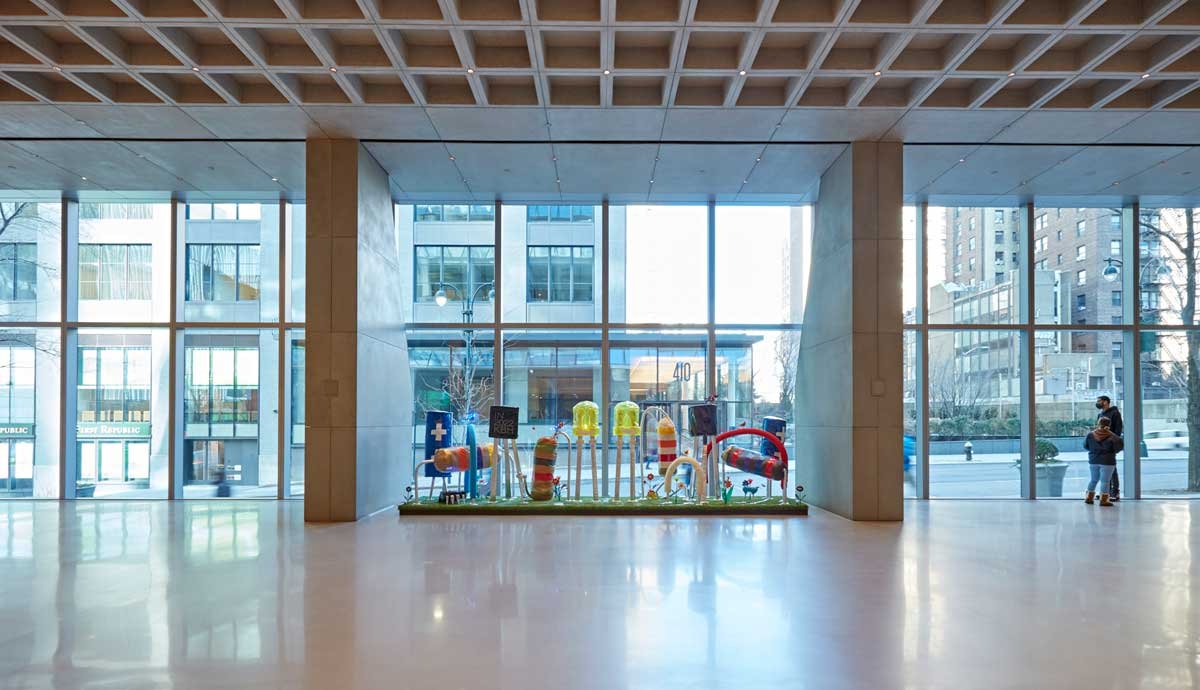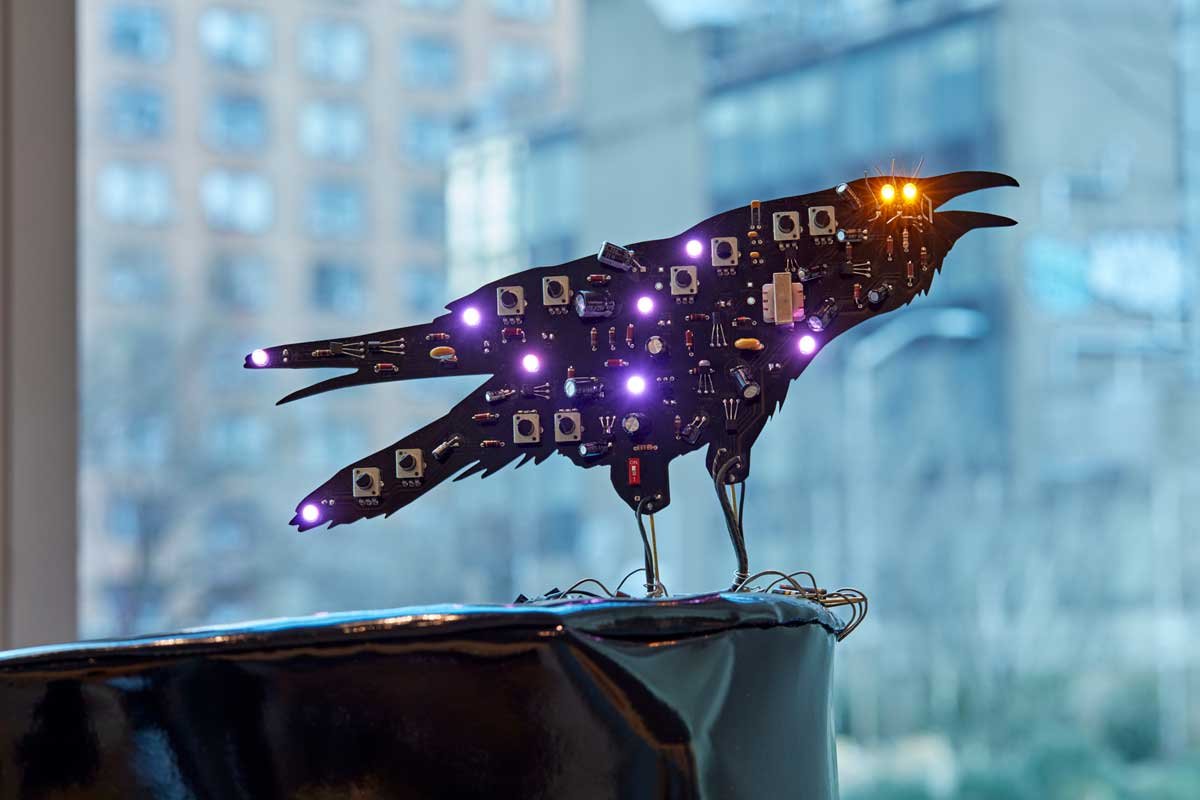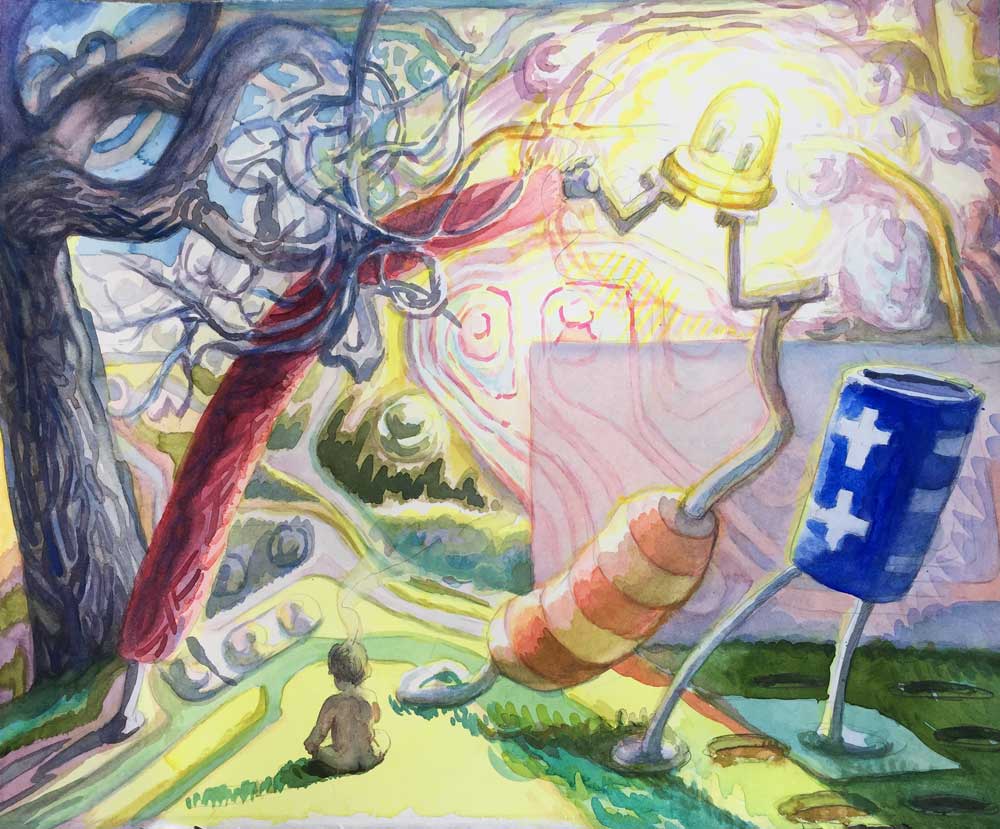“Circuit Garden” by Kelly Heaton was curated by Common Ground Arts and commissioned by Arts Brookfield for Manhattan West and Brooklyn Commons. Video courtesy of Brookfield Arts and Micah Joel Productions
Circuit Garden celebrates our electronic culture and invites us to contemplate nature – specifically human nature in symbiosis with machine intelligence. Artist Kelly Heaton presents a large-scale circuit board in the form of an artificial lawn that is “planted” with plush sculptural electronic devices. The work evokes a playful garden, or a vintage circuit board that has been enlarged to human scale. Situated in the landscape of Circuit Garden, viewers will discover smaller functional circuits that mimic animal behaviors, such as birdsong and chirping crickets. As the viewer approaches the installation to investigate further, Heaton’s analog electronic designs generate these naturalistic sounds in real time. The sonic landscape of Circuit Gardenis thus brought to life by electric vibrations of artificial origin and not recordings of real birds and crickets, as one might expect.
STATEMENT BY KELLY HEATON:
“Electronic technology is profoundly shaping our world. Many people are symbiotic with their smart phones and digital presence. Artificial intelligence is growing smarter, and our concept of “nature” is being radically transformed by engineering. Electricity is the most important invention since the discovery of fire. Yet, the art of electrical engineering is not well understood or practiced by people outside of the scientific community. I would like to invite everyone—not only engineers—into a conversation about electronic culture, nature, and the rise of machine intelligence. While most artists work with digital media, I focus my creative practice on electronic hardware because circuits are the physical body without which there would be no digital media. Like a biologist studies animals, I study circuits to understand the physiology of intelligent machines. I am inspired by Nikola Tesla’s statement, “If you want to find the secrets of the universe, think in terms of energy, frequency and vibration.” My art explores these concepts literally in the form of circuits that vibrate in naturalistic patterns. Circuit Garden pays homage to electrical oscillation, specifically to the astable multivibrator, which is my favorite method to generate life-like waveforms.”








































